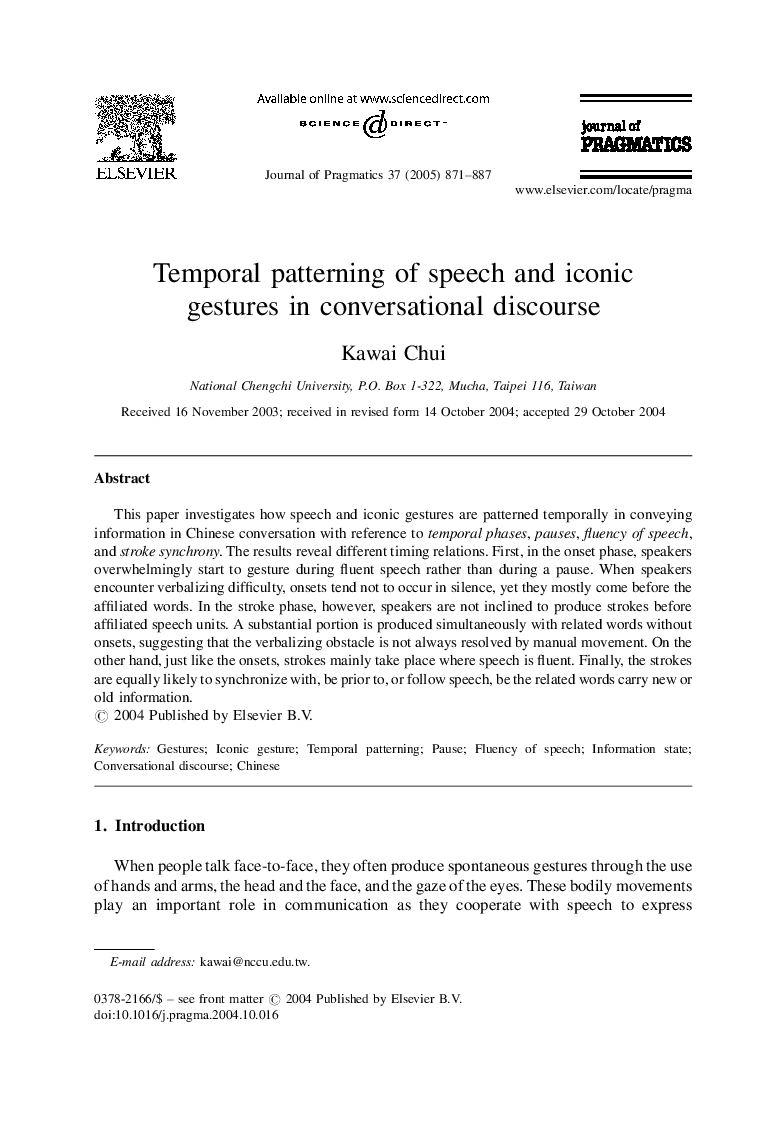| Article ID | Journal | Published Year | Pages | File Type |
|---|---|---|---|---|
| 10460422 | Journal of Pragmatics | 2005 | 17 Pages |
Abstract
This paper investigates how speech and iconic gestures are patterned temporally in conveying information in Chinese conversation with reference to temporal phases, pauses, fluency of speech, and stroke synchrony. The results reveal different timing relations. First, in the onset phase, speakers overwhelmingly start to gesture during fluent speech rather than during a pause. When speakers encounter verbalizing difficulty, onsets tend not to occur in silence, yet they mostly come before the affiliated words. In the stroke phase, however, speakers are not inclined to produce strokes before affiliated speech units. A substantial portion is produced simultaneously with related words without onsets, suggesting that the verbalizing obstacle is not always resolved by manual movement. On the other hand, just like the onsets, strokes mainly take place where speech is fluent. Finally, the strokes are equally likely to synchronize with, be prior to, or follow speech, be the related words carry new or old information.
Related Topics
Social Sciences and Humanities
Arts and Humanities
Language and Linguistics
Authors
Kawai Chui,
